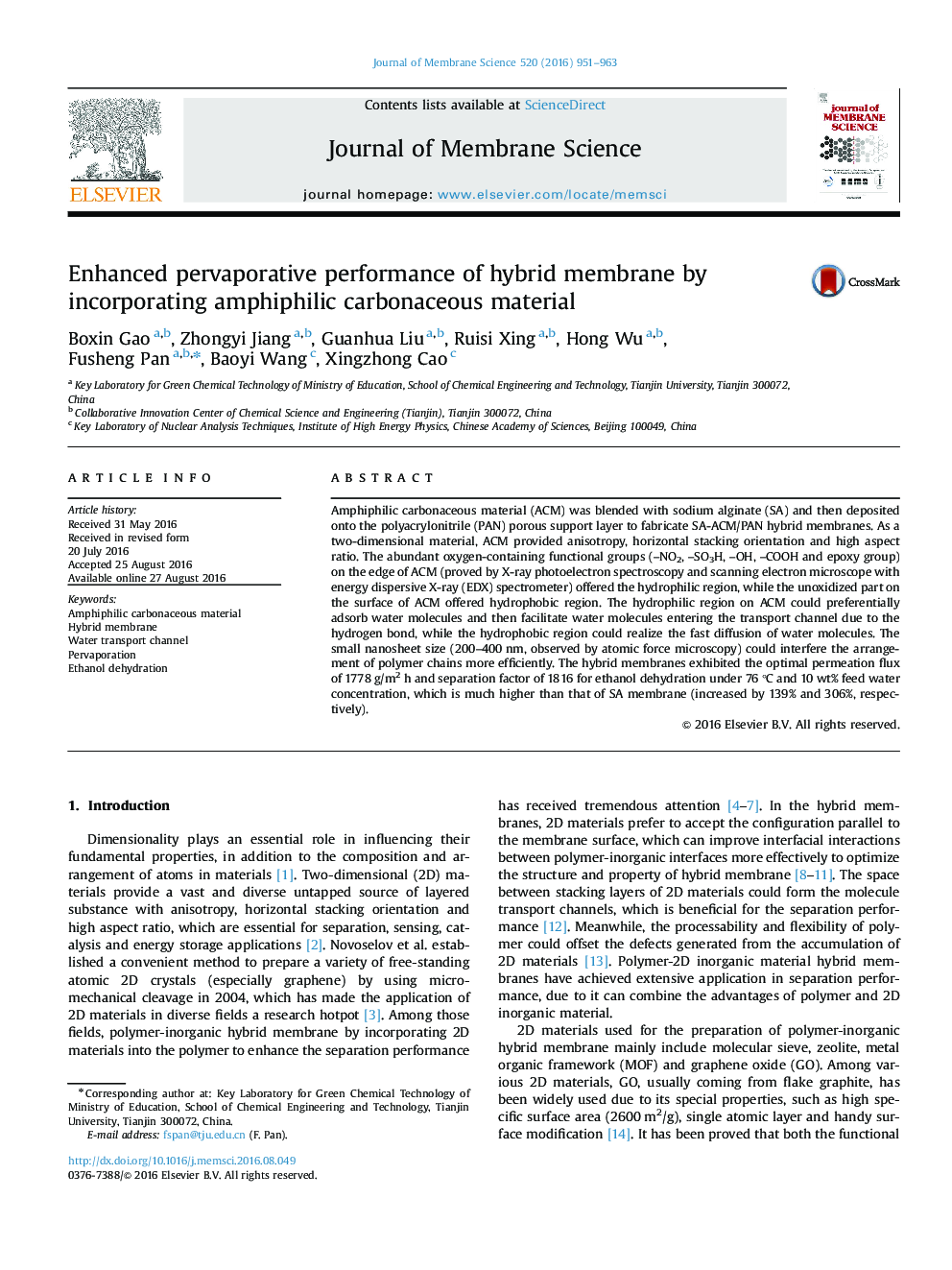| Article ID | Journal | Published Year | Pages | File Type |
|---|---|---|---|---|
| 7020538 | Journal of Membrane Science | 2016 | 13 Pages |
Abstract
Amphiphilic carbonaceous material (ACM) was blended with sodium alginate (SA) and then deposited onto the polyacrylonitrile (PAN) porous support layer to fabricate SA-ACM/PAN hybrid membranes. As a two-dimensional material, ACM provided anisotropy, horizontal stacking orientation and high aspect ratio. The abundant oxygen-containing functional groups (-NO2, -SO3H, -OH, -COOH and epoxy group) on the edge of ACM (proved by X-ray photoelectron spectroscopy and scanning electron microscope with energy dispersive X-ray (EDX) spectrometer) offered the hydrophilic region, while the unoxidized part on the surface of ACM offered hydrophobic region. The hydrophilic region on ACM could preferentially adsorb water molecules and then facilitate water molecules entering the transport channel due to the hydrogen bond, while the hydrophobic region could realize the fast diffusion of water molecules. The small nanosheet size (200-400 nm, observed by atomic force microscopy) could interfere the arrangement of polymer chains more efficiently. The hybrid membranes exhibited the optimal permeation flux of 1778 g/m2 h and separation factor of 1816 for ethanol dehydration under 76 °C and 10 wt% feed water concentration, which is much higher than that of SA membrane (increased by 139% and 306%, respectively).
Related Topics
Physical Sciences and Engineering
Chemical Engineering
Filtration and Separation
Authors
Boxin Gao, Zhongyi Jiang, Guanhua Liu, Ruisi Xing, Hong Wu, Fusheng Pan, Baoyi Wang, Xingzhong Cao,
